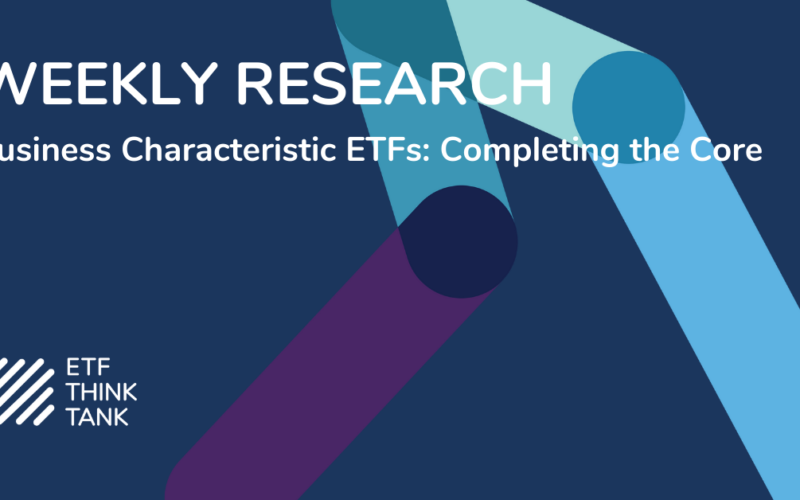Selecting the most appropriate ETF can be a challenging proposition, especially in the unusual markets we are experiencing today. At Toroso, we examine the underlying fundamentals and look for economic themes that indicate opportunities and pitfalls. In today’s market we believe the rosy earnings picture is hiding a real problem from most investors. The quality of the earnings can shine a light on how an investor can position the portfolio to minimize risks relating to the inflated earnings picture we see in today’s equity markets.
Earnings Quality
Equity markets are at or near all-time highs, as are corporate earnings. How did we get here? The expected response is that our economy is selling more goods, and therefore earning more profit.
While there has been positive sales growth the last few years, it’s very small compared to the earnings growth we have experienced since the March 2009 lows. Ignoring the dramatic downturn of 2008 and the snap back rebound of 2009, earnings have grown over 80% since December 31, 2009 while sales growth is just about 24%. The bull market over the last few years has coincided with a massive margin expansion, unlike any we’ve seen in recent history, yet it has not been driven by a significant increase in sales. Companies are in some cases earning twice as much per dollar of revenue than they have historically.
So how did we get here? It’s important to view this in the context of the current market. Here are a few possibilities:
- Interest rates are at or near historical lows, creating cheaper debt financing
- Increased productivity
- Increase in part time employment, reducing employer costs
- Lack of significant wage growth or inflation
Wage growth and inflation can directly affect profit margins as they directly affect input costs for a business. While employment has improved, there is still a large gap between U3, the most often quoted unemployment number, and the U6 unemployment number, caused by an increased number of discouraged workers, marginally attached workers, and part time workers. With the massive liquidity induction from the Federal Reserve over the last few years, the lack of wage and inflation growth has puzzled many investors. Much of this can be attributed to a decline in the velocity of money as well as the labor participation rate. It appears the market has rewarded companies that choose to hoard cash, focus on efficiencies and prepare for the next 2008 scenario, while punishing companies that hire, acquire or reinvest the liquidity provided by the Federal Reserve with low valuations. All of this leads us to believe that earnings are currently overstated.
How to Access Quality
In our opinion, today’s market environment argues for the use of a revenue weighted ETF to access specifically the mid and small cap areas of the US market. Profit margins are arguably inflated, and by focusing on revenues, you avoid much of this margin expansion, and significantly reduce the Price to Sales of your mid and small cap investments. We believe the best way to do so is through the Revenue Shares Mid Cap (RWK) and Revenue Shares Small Cap (RWJ) ETFs. These ETFs re-weight the S&P 400 Index and S&P 600 Index for top line revenue, while maintaining positions in the same securities.
Why not Large Cap?
We think this approach is most effective with respect to the mid and small cap markets because of another recent phenomenon we’ve seen in the US stock market, specifically in the large cap arena, companies holding high levels of cash. Many companies have raised much more debt than they actually need, as they felt they were accessing debt markets at levels that might not be available to them in the future. While we don’t disagree with this philosophy, it has left many large cap companies in somewhat of a pickle. With stocks prices and earnings at or near all-time highs, coupled with minimal sales growth, we believe the large amount of cash on corporate balance sheets will lead to an increase in M&A activity.
It’s much more profitable for a large cap company to buy a mid or small cap company with non-inflated profit margins. When a large cap company purchases a mid or small cap company, often they do so because they believe that through economies of scale, they can increase the profit margin on the acquired business. Clearly, this is more likely if the desired asset has not already gone through a massive margin expansion.
In the charts below you can see a comparison of the current lower margins of the RevenueShare Mid Cap (RWK) and Small Cap (RWJ) ETFs, compared to the expanded margins of iShares S&P Mid Cap 400 (IJH) and iShares S&P Small Cap 600 (IJR) ETFs.

The biggest improvement from this analysis is in the Price to Sales data. As you can see from the chart below, the price you pay for each unit of sale has significantly increased in the assets that have experienced the large margins expansion seen in the last few years.

In Conclusion
Based on the economic environment outlined above, when allocating investments to the mid and small cap markets using ETFs, size does matter, and quality over quantity in earnings is key. We believe the true engine of capital appreciation in today’s market for both mid and small cap companies are mergers and acquisitions. In our opinion, RWK and RWJ appear to overweight exposures to acquisition targets.
Disclosure
All investments involve risk, including possible loss of principal.
This material is provided for informational purposes only and should not be considered an individualized recommendation or personalized investment advice. The investment strategies mentioned may not be suitable for everyone. Each investor needs to review an investment strategy for his or her own particular situation before making any investment decision.
All expressions of opinion are subject to change without notice in reaction to shifting market conditions. Data contained herein from third party providers is obtained from what are considered reliable sources. However, its accuracy, completeness or reliability cannot be guaranteed.
Examples provided are for illustrative purposes only and not intended to be reflective of results you can expect to achieve.
The value of investments and the income from them can go down as well as up and investors may not get back the amounts originally invested, and can be affected by changes in interest rates, in exchange rates, general market conditions, political, social and economic developments and other variable factors. Investment involves risks including but not limited to, possible delays in payments and loss of income or capital. Neither Toroso nor any of its affiliates guarantees any rate of return or the return of capital invested. This commentary material is available for informational purposes only and nothing herein constitutes an offer to sell or a solicitation of an offer to buy any security and nothing herein should be construed as such. All investment strategies and investments involve risk of loss, including the possible loss of all amounts invested, and nothing herein should be construed as a guarantee of any specific outcome or profit. While we have gathered the information presented herein from sources that we believe to be reliable, we cannot guarantee the accuracy or completeness of the information presented and the information presented should not be relied upon as such. Any opinions expressed herein are our opinions and are current only as of the date of distribution, and are subject to change without notice. We disclaim any obligation to provide revised opinions in the event of changed circumstances.
The information in this material is confidential and proprietary and may not be used other than by the intended user. Neither Toroso or its affiliates or any of their officers or employees of Toroso accepts any liability whatsoever for any loss arising from any use of this material or its contents. This material may not be reproduced, distributed or published without prior written permission from Toroso. Distribution of this material may be restricted in certain jurisdictions. Any persons coming into possession of this material should seek advice for details of and observe such restrictions (if any).












